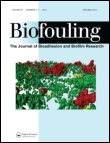
BIOFOULING
Scope & Guideline
Bridging Research and Application in Biofouling
Introduction
Aims and Scopes
- Biofilm Formation and Characterization:
Research on the mechanisms of biofilm development, including the microbial community structure, environmental factors influencing biofilm formation, and the characterization of biofilms in different settings. - Antimicrobial and Antifouling Strategies:
Investigation of novel antimicrobial agents and antifouling coatings, including natural products and synthetic compounds, that can effectively inhibit biofilm growth and associated fouling. - Environmental and Industrial Implications of Biofouling:
Studies examining the impact of biofouling on industrial operations, environmental health, and aquatic ecosystems, including the role of biofilms in corrosion and biosecurity. - Interdisciplinary Approaches to Biofouling:
Integration of disciplines such as microbiology, material science, and engineering to develop innovative solutions for biofouling management and prevention. - Clinical and Medical Applications:
Research focused on the implications of biofilms in clinical settings, particularly in relation to medical devices and the treatment of infections caused by biofilm-forming pathogens.
Trending and Emerging
- Nanotechnology in Biofouling Control:
There is a growing trend in the application of nanotechnology for developing advanced antifouling strategies, including nanomaterials that enhance the efficacy of coatings and antimicrobial agents. - Sustainable and Green Antifouling Solutions:
Research focusing on environmentally friendly antifouling solutions, such as biocontrol agents and natural extracts, is gaining traction as awareness of ecological impacts increases. - Interkingdom Biofilm Interactions:
Studies examining interactions between different microbial kingdoms (e.g., bacteria and fungi) within biofilms are becoming more prevalent, highlighting the complexity of biofilm communities and their behaviors. - Artificial Intelligence and Biofouling Management:
The integration of artificial intelligence for optimizing antifouling strategies and predicting biofilm development is emerging as a significant theme, reflecting advancements in computational methods. - Impact of Biofilms on Human Health:
There is an increasing focus on the implications of biofilms in healthcare settings, particularly regarding persistent infections and the development of antimicrobial resistance.
Declining or Waning
- Traditional Chemical Antifouling Agents:
Research focusing on conventional chemical antifouling agents has decreased as the scientific community shifts towards more sustainable and environmentally friendly alternatives. - Basic Biofilm Detection Techniques:
The publication of studies centered on basic biofilm detection methods has waned, indicating a move towards more advanced and integrated techniques that provide deeper insights into biofilm dynamics. - Single-Species Biofilm Studies:
There is a noticeable reduction in the exploration of single-species biofilms, as recent research increasingly emphasizes the complexity and interactions within multi-species biofilms. - Marine Biofouling in Static Environments:
Research specifically targeting static marine environments for biofouling studies has declined, possibly due to a greater focus on dynamic systems that better reflect real-world conditions. - Historical and Taxonomic Studies of Biofouling Organisms:
Investigations primarily focused on the historical or taxonomic aspects of biofouling organisms have decreased, with a stronger emphasis now on functional and ecological studies.
Similar Journals
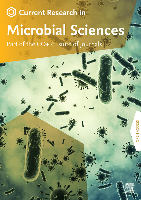
Current Research in Microbial Sciences
Connecting Researchers with Cutting-edge Microbial DiscoveriesCurrent Research in Microbial Sciences is a distinguished peer-reviewed journal published by Elsevier, focusing on the dynamic and rapidly advancing fields of microbiology and infectious diseases. With an ISSN of 2666-5174, this journal has established itself as an essential resource for researchers, professionals, and students alike, offering the latest findings and insights from 2020 to 2024. The journal holds a significant position in the academic landscape, achieving a Q2 ranking across multiple categories, including Immunology and Microbiology, Infectious Diseases, and Medical Microbiology, demonstrating its impact in these critical areas of study. With impressive Scopus rankings—such as being placed in the 94th percentile for Immunology and Microbiology—current research is well-supported by a thriving scientific community. Although the journal is not open access, it serves as a vital platform for disseminating high-quality research and fostering collaboration within the microbial sciences. Engaging with this journal enables professionals and researchers to stay abreast of innovations and contribute to the collective body of knowledge that shapes our understanding of microbial interactions and infectious diseases.

Water Biology and Security
Innovating solutions for water resources and ecosystems.Water Biology and Security, published by KEAI PUBLISHING LTD, is a pivotal open-access journal that has been addressing critical issues in the interdisciplinary fields of water sciences, aquatic biology, and environmental sustainability since its inception in 2022. With an E-ISSN of 2772-7351 and a distinguished ranking within the top quartile (Q1) of several categories including Agricultural and Biological Sciences, Animal Science and Zoology, Aquatic Science, and Water Science and Technology, the journal stands out as a leading platform for innovative research. Based in Beijing, China, and supported by an impressive impact factor derived from its Scopus rankings, the journal aims to disseminate high-quality and impactful research that addresses the challenges related to water resources and ecosystems. Its open-access format enhances accessibility, ensuring that vital information reaches policymakers, practitioners, and scholars worldwide. As we converge through 2024, the journal aspires to foster a vibrant scholarly community, facilitating dialogues that inform practice and advance the scientific understanding of aquatic environments.
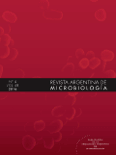
REVISTA ARGENTINA DE MICROBIOLOGIA
Empowering research and collaboration in microbiology.REVISTA ARGENTINA DE MICROBIOLOGIA, published by the ASOCIACION ARGENTINA MICROBIOLOGIA, stands as a prominent open-access journal in the field of microbiology and medicine since its establishment in 1979. With an ISSN of 0325-7541 and an E-ISSN of 1851-7617, this journal has paved the way for disseminating high-quality research while enhancing accessibility for academics and practitioners worldwide. The journal has achieved notable rankings, being classified in Q3 for Medicine (miscellaneous) and Q3 for Medical Microbiology in 2023, reflecting its commitment to advancing knowledge in these critical areas. Despite its relatively modest impact factors, it occupies a vital niche in the academic landscape, fostering collaborations and innovative research among experts. With Open Access available since 2013, REVISTA ARGENTINA DE MICROBIOLOGIA not only facilitates widespread distribution of valuable scientific information but also empowers researchers, professionals, and students to stay abreast of the latest findings and developments in microbiology. For those engaged in the evolving realm of microbiology, this journal serves as an essential resource for sharing insights and advancing the scientific community.
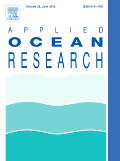
APPLIED OCEAN RESEARCH
Empowering Solutions for a Sustainable Ocean FutureApplied Ocean Research, published by Elsevier Scientific Ltd, stands as a premier journal in the field of ocean engineering, with an impressive impact factor derived from its esteemed reputation and contributions to the discipline. Having been established in 1979, the journal has continually provided a platform for groundbreaking research, fostering innovation and advancement in applied ocean science through a diverse array of topics, including marine technology, coastal engineering, and ocean energy. Currently holding a prestigious Q1 ranking in the Scopus category of Ocean Engineering, with a rank of 10 out of 105 and a notable 90th percentile, Applied Ocean Research is a vital resource for researchers, professionals, and students dedicated to understanding and solving complex challenges linked to ocean environments. Although it provides subscription-based access, the depth and quality of research featured make it a key reference point for those in academia and industry alike. Located in the heart of London, this journal embodies a commitment to excellence in the study of ocean phenomena, positioning itself as a critical conduit for knowledge dissemination and professional growth in this dynamic field.

Nanotechnology Science and Applications
Elevating Knowledge in Nanotechnology and Pharmaceutical Sciences.Nanotechnology Science and Applications, published by DOVE MEDICAL PRESS LTD, is a premier open-access journal dedicated to advancing knowledge in the fields of nanoscience and nanotechnology, particularly focusing on their applications in bioengineering, biomedical engineering, and pharmaceutical sciences. Since its inception in 2008, this journal has provided a platform for the dissemination of high-quality research that is rigorously peer-reviewed, ensuring that only the most impactful findings reach a global audience. With an impressive impact factor reflected in its recent categorization in the Q1 tier for Pharmaceutical Science and Q2 for Bioengineering and Nanoscience, it stands as a critical resource for researchers, practitioners, and students eager to explore the cutting-edge innovations within these rapidly evolving disciplines. The journal's commitment to accessibility and its robust indexing in Scopus—ranked highly in its respective categories—reinforces its importance as a leading forum for the exchange of scientific knowledge and the fostering of collaborative research in nanotechnology applications.

AMB Express
Advancing the Frontiers of Microbiology and BiotechnologyAMB Express is an esteemed open-access journal published by Springer, dedicated to the fields of Applied Microbiology and Biotechnology as well as Biophysics. Since its inception in 2011, the journal has played a pivotal role in disseminating cutting-edge research and advancements, particularly for the scientific community in Germany and beyond. With a notable impact factor and ranking in the top quartile of its categories, AMB Express is recognized for its contributions to the disciplines, ranking 29th in Biochemistry, Genetics and Molecular Biology and 37th in Applied Microbiology and Biotechnology, reflecting its commitment to high-quality scientific inquiry. Researchers, professionals, and students will find a wealth of knowledge within its pages, benefiting from a diverse array of articles that stimulate innovation and collaboration. As the journal continues its convergence from 2011 to 2024, it remains a vital source for anybody looking to stay at the forefront of microbiological and biotechnological studies.

Jundishapur Journal of Microbiology
Connecting researchers to foster breakthroughs in microbial science.Welcome to the Jundishapur Journal of Microbiology, a peer-reviewed publication dedicated to advancing the field of microbiology. Published by BRIEFLAND, this journal focuses on key areas such as infectious diseases and medical microbiology, offering a platform for researchers to share their findings from 2009 to 2024. Despite its current positioning in Quartile 4 across various categories in 2023, the journal provides a valuable resource for budding scientists and established professionals alike, contributing to the growing body of knowledge in these critical areas. While it is not an open-access journal, the Jundishapur Journal prioritizes the dissemination of research in the Netherlands, facilitating a deeper understanding of microbial science and its implications for public health. Join a community of innovators committed to exploring both emerging and established themes in microbiology.
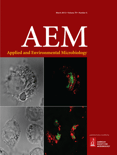
APPLIED AND ENVIRONMENTAL MICROBIOLOGY
Connecting Science and Sustainability Through Microbial InsightsApplied and Environmental Microbiology, published by the American Society for Microbiology, stands as a leading journal in the fields of applied microbiology and environmental science since its inception in 1976. With a prestigious Q1 quartile ranking across multiple categories including Applied Microbiology and Biotechnology, Ecology, and Food Science, this journal consistently disseminates high-impact research that drives innovation and advances our understanding of microbial interactions within our ecosystems and industries. As ranked by Scopus, it exhibits prominent rankings in various related fields, underscoring its critical role in shaping contemporary microbiological research. Researchers, professionals, and students alike can stay abreast of groundbreaking studies while contributing to a vast body of knowledge that spans diverse aspects of microbiology, biotechnology, and ecology, ultimately contributing to sustainable practices. Join the community of dedicated scholars and explore vital research findings that impact both environmental health and technological advancement.

ANNALS OF MICROBIOLOGY
Fostering collaboration in cutting-edge microbiological research.ANNALS OF MICROBIOLOGY is a prestigious journal dedicated to advancing the field of microbiological research, published by BMC, renowned for its commitment to providing open access to vital scientific findings. With its ISSN 1590-4261 and E-ISSN 1869-2044, this journal provides a platform for the dissemination of high-quality research since its inception in 1997. Renowned for its rigorous peer-review process, it has attained a commendable Q2 ranking in the Applied Microbiology and Biotechnology category in 2023, reflecting its significant contributions to the discipline. Positioned within the 67th percentile among its peers in Scopus rankings, ANNALS OF MICROBIOLOGY continues to facilitate the exchange of innovative ideas and methodologies, serving as an essential resource for researchers, professionals, and students alike. The journal covers a broad spectrum of topics, emphasizing the intersection of microbiology with applied sciences, thereby fostering an environment that encourages collaboration and advancement in this vital field. Scholars seeking to stay at the forefront of microbiological studies will find ANNALS OF MICROBIOLOGY an invaluable addition to their academic pursuits.

APPLIED MICROBIOLOGY AND BIOTECHNOLOGY
Unleashing the potential of microbes for a sustainable future.Applied Microbiology and Biotechnology, an esteemed journal published by Springer, serves as a vital resource in the domains of microbiology and biotechnology. With an impressive impact factor reflecting its quality, the journal holds Q1 rankings in various categories including Applied Microbiology and Biotechnology, Biotechnology, and Medicine (Miscellaneous) as of 2023. Spanning the years from 1984 to 2024, it underscores its commitment to disseminating groundbreaking research that addresses pressing challenges in health, agriculture, and environmental sustainability. The journal is rigorously indexed and holds respectable positions in Scopus rankings, notably within the top 15% of Applied Microbiology and Biotechnology and the top 15% in Biochemistry, Genetics, and Molecular Biology. Although it is not Open Access, its comprehensive articles, reviews, and short communications are indispensable for researchers, professionals, and students eager to advance their understanding and application of microbial processes and biotechnological innovations in real-world contexts.